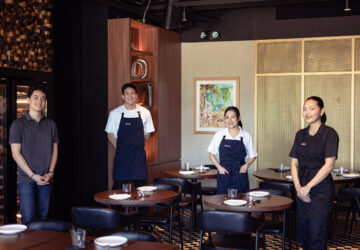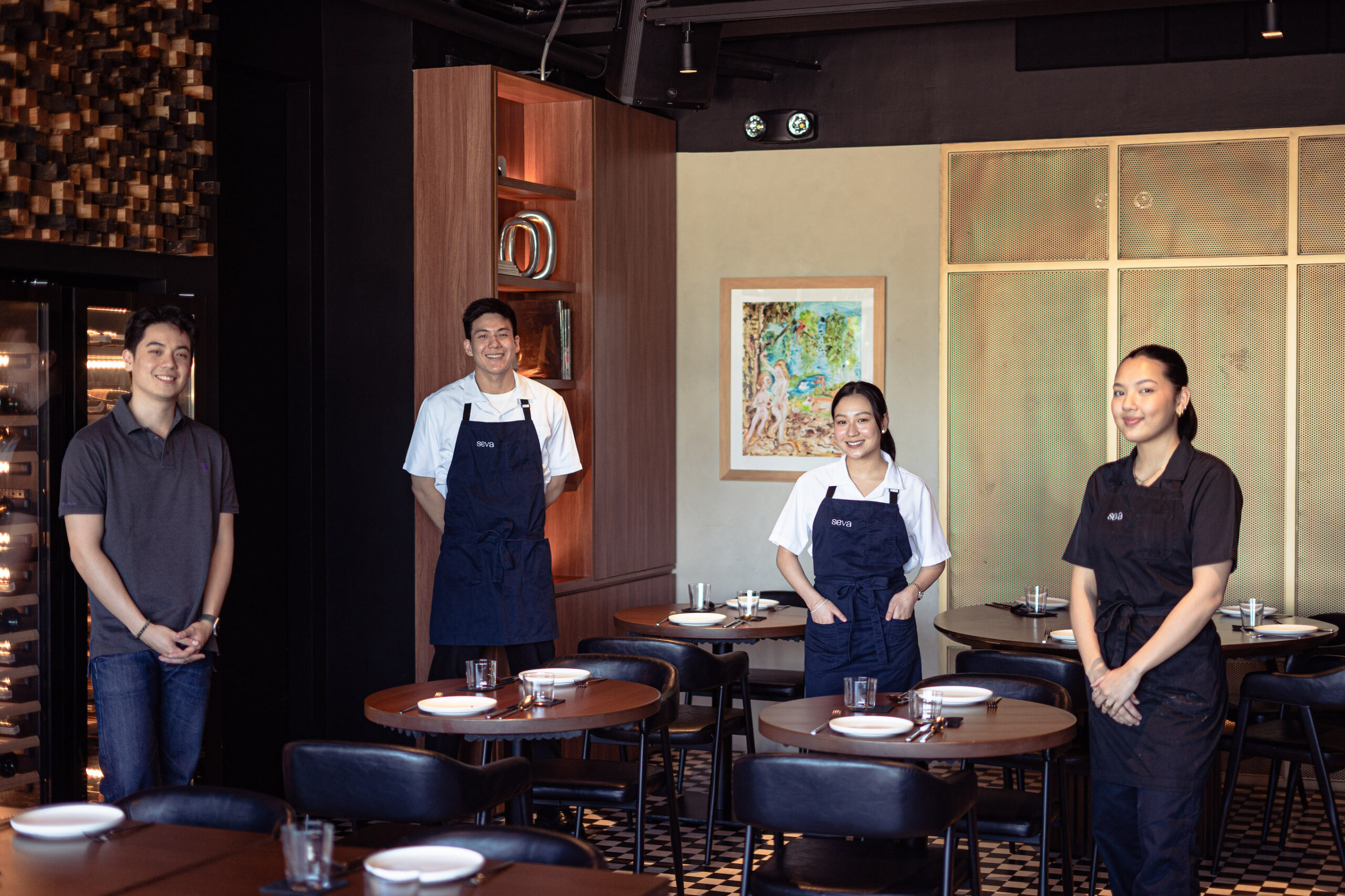”Another day, another service,” Amanda Hao says. This reflects the restaurant’s name: Seva, pronounced see-va.
A concept in Hinduism, Seva translates to “selfless service,” of giving without expecting anything in return. Such a philosophy is embodied by the team as they call out orders and actively serve meals to a regular rotation of diners.

All under 30, Seva is the brainchild of chefs Amanda Hao and Neil Dy, with front-of-house manager Jonah Chantong, all of whom combined their talents to create a dining experience that is both refined and unpretentious.
Without a doubt, the founders are smart, savvy, agile, and organized—like how one needs to be when running a kitchen. During our interview, they preferred sticking to the talking points and hard facts instead of talking back and forth in an unstructured, relaxed manner.
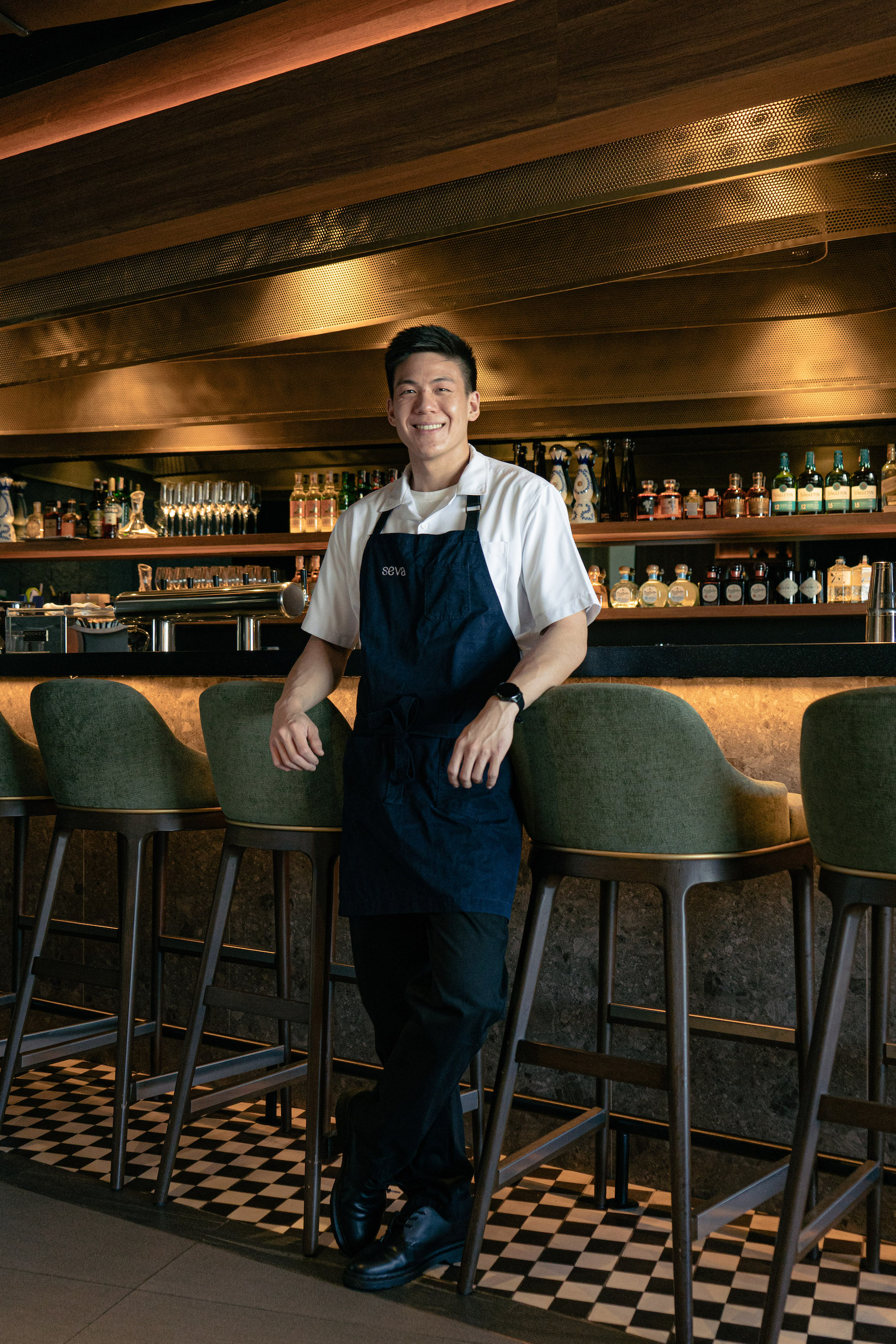
Hao and Dy completed their communications and communications technology degrees, respectively, at Ateneo de Manila University. Meanwhile, Chantong studied economics at De La Salle University Manila. Their managing partner Juliana Guzman recently finished Ateneo’s restaurant entrepreneurship program. The restaurant has multiple partners, angel investors, and other contributors who worked together to launch the restaurant. And it’s clear that each member brings a unique perspective into this labor of passion.
Early beginnings at Rooftop Bar and 29 Sang
“We basically built Seva through experience, with no experience!” says Dy.
Despite the team’s lack of formal culinary training, their journey into the F&B industry began with a rooftop bar along Katipunan Avenue, launched by Chantong and Dy while they were still in university.

But it was during the pandemic that the gourmet roots grew deeper. Hao taught Dy how to make pizza, leading to an online food business, and the duo began cooking every day. Dy’s father provided a commissary for the pizza prep, where they would serve the pies to friends.
These friends soon began requesting more elaborate meals, which expanded into steak, pasta, and a selection of appetizers. Through word of mouth, the food business expanded organically into a private dining experience, 29 Sang. After almost two years in the business, the team transitioned into Seva, their first public dining, brick-and-mortar dining experience.
Seva’s thoughtful design and architecture
“We really wanted to have a restaurant in San Juan because we’re from here, and we feel like there aren’t enough restaurants here,” says Chantong. “Consumers here want something different, something more.”

Tucked away in a nondescript building in San Juan, you enter through varnished doors and into an elegant yet relaxed space. They transformed an old office unit into a stylish restaurant with the help of a team of architects that included Dy’s cousin, Kenneth Dy, Alcen Ericka Bantugan, and Gaby Asuncion. The design features a luxurious L-shaped bar and wave-like ceiling patterns. The interiors undoubtedly suggest a mid-century modern aesthetic, with a half-circle booth colored in Jaguar Racing Green. The textures vary but fall into place: black-and-white checkered floors, warm wooden paneling, and smooth stone surfaces. Under the tables are foam padding that improves the acoustics of the space.

In the powder room cubicles are a pair of colorful artwork by artist, curator, and writer Patrick de Veyra. Meanwhile, the private room features a fun work by contemporary Filipino artist JAR, of what looks like a figure playing winter sports. Certain corners feature prints and paintings by American artists lent by the restaurant partners.

A dynamic kitchen staff
In the ever-busy restaurant, the staff bustle, donning dark navy aprons that reflect the subtle choices making up the restaurant as a whole. The kitchen buzzes with energy, staffed by the young team, many of whom are students or recent graduates from the nearby Polytechnic University of the Philippines.
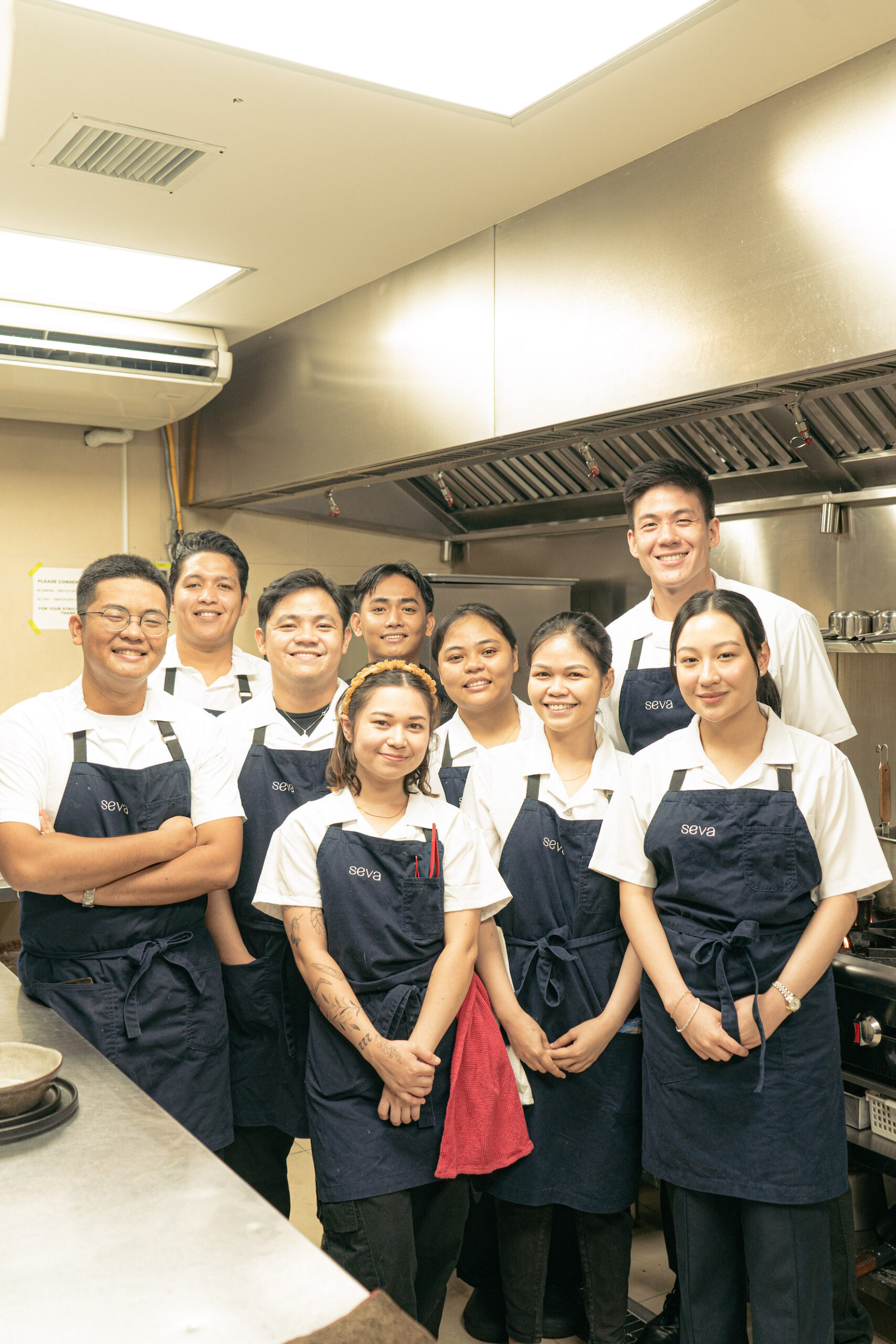
The team convenes at the restaurant around 2 or 3 p.m. and starts service at 6 p.m., with a second seating at 8:30 p.m. While the kitchen closes at 10 p.m., the staff sometimes stay till midnight or 3 a.m.
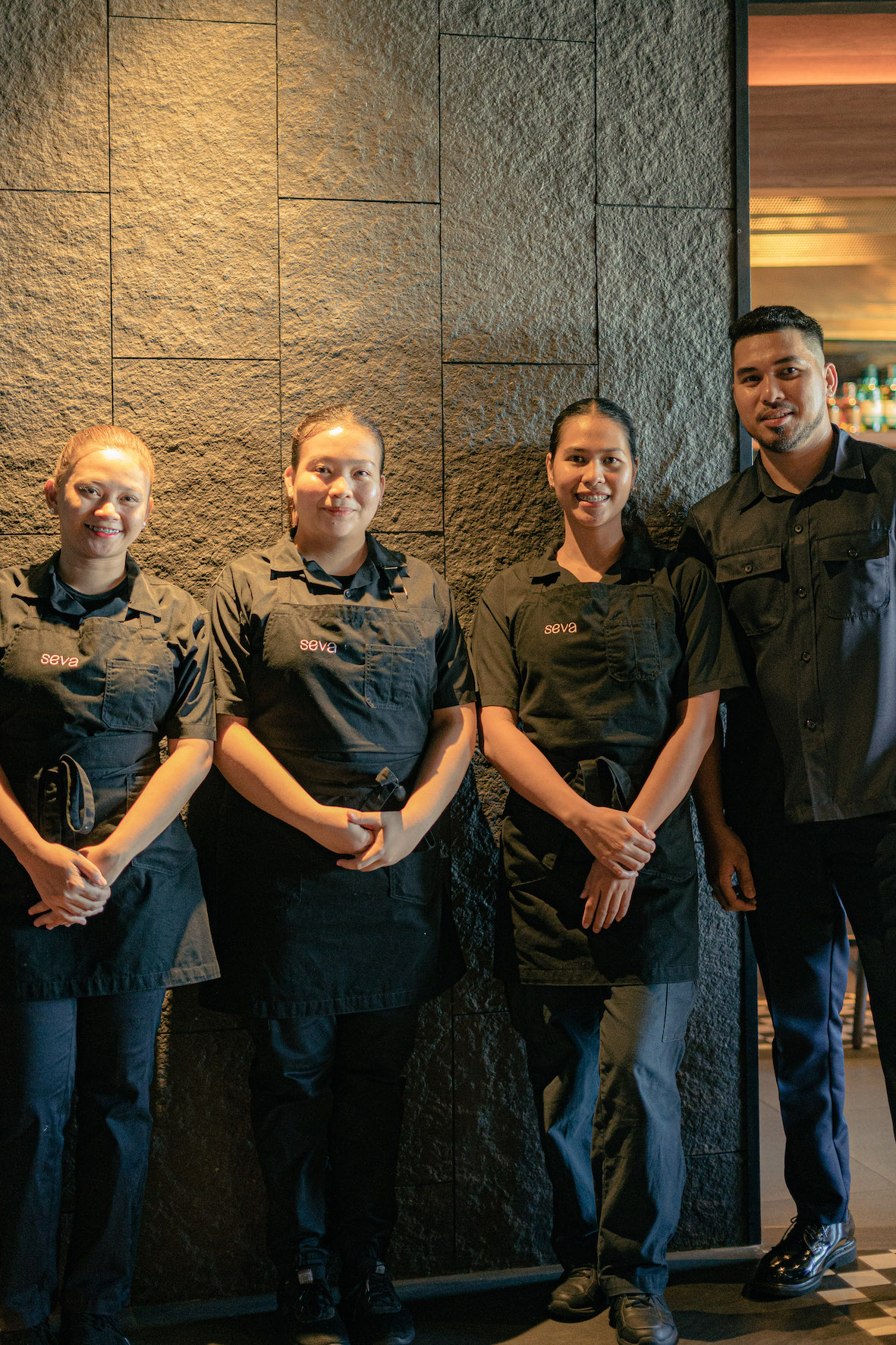
“Everyone’s learning from each other,” says Hao. “Everyone’s hungry. Literally and figuratively,” adds Dy.
“But what’s it like working with your partner?” Chantong cheekily chimes in.
After a light laugh, Hao responds, “There are pros and cons. It’s fun. We help each other out, and it is reflected in our dishes. I can’t say I made one dish myself. It’s always a collaboration.”
Dy agrees, noting that despite occasional arguments, these dynamics are normal. “But at the end of the day, there are no grudges. We’re all working toward the same goal,” Chantong finishes.
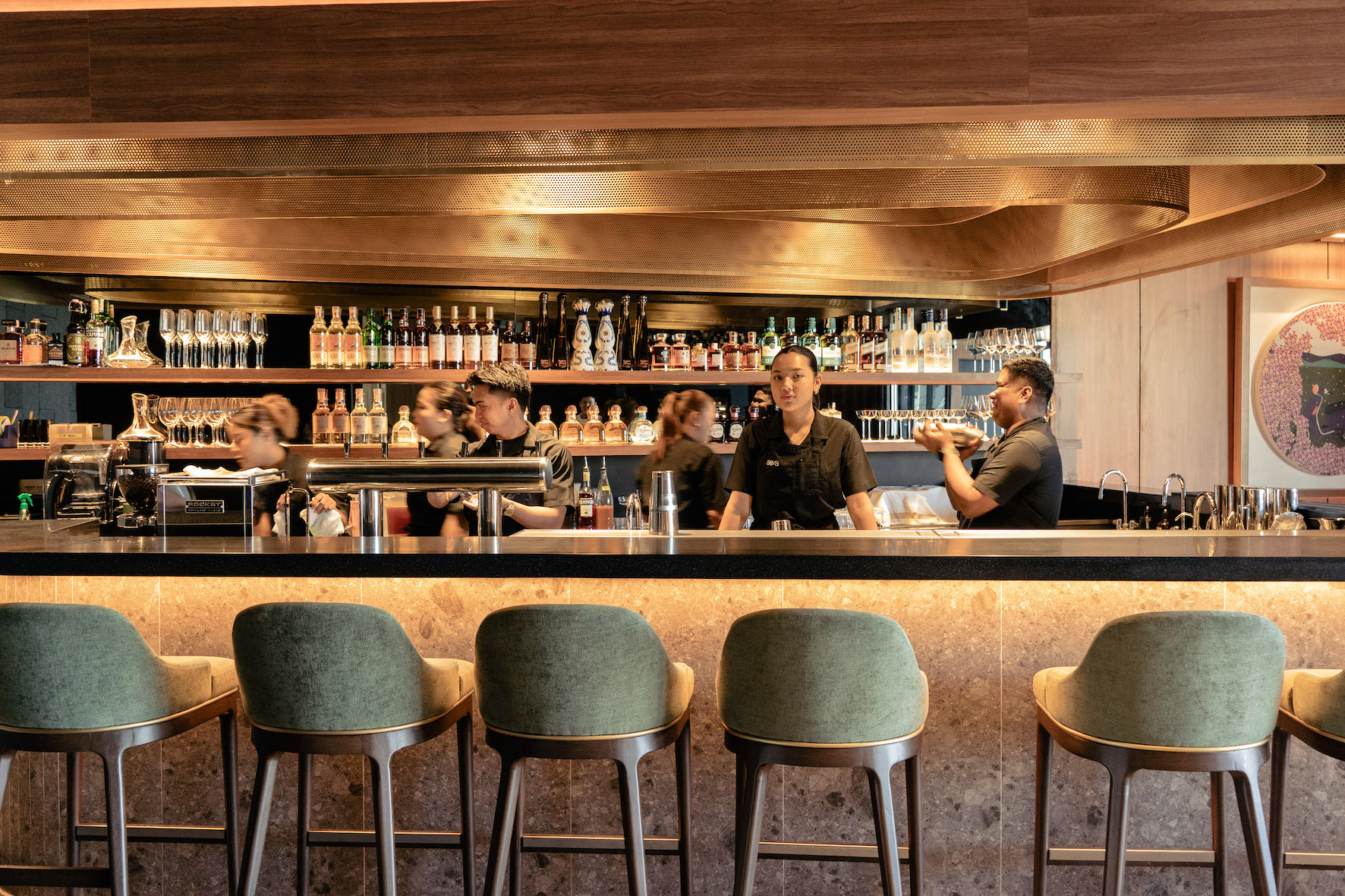
Only a few people can go into business with their significant other or close friends, and come out of it successfully. And so far the Seva team seems to practice a detached, easygoing mindset while still maintaining that foundation of friendship.
They must be doing something right because the food is downright fantastic, while the price range is reasonable—something rare when most meals these days mean paying extravagant prices.
Seva’s exceptional food and drink
Seva’s menu features global fare, which the team describes as New American cuisine. Hao recalls her visits with Dy and her family to Los Angeles and New York, and studying what traits make up an excellent restaurant. But at the core was always food. The dishes at Seva assimilate a mix of cultures in their flavors, which are presented without having to think too hard about haute cuisine or the origins of the food on their plates.
“The food is straightforward, unpretentious, simple, familiar flavors,” says Dy and Hao.
Most of the dishes are meant to be shared, served on small plates, family-style, so that everybody can get a taste of everything.
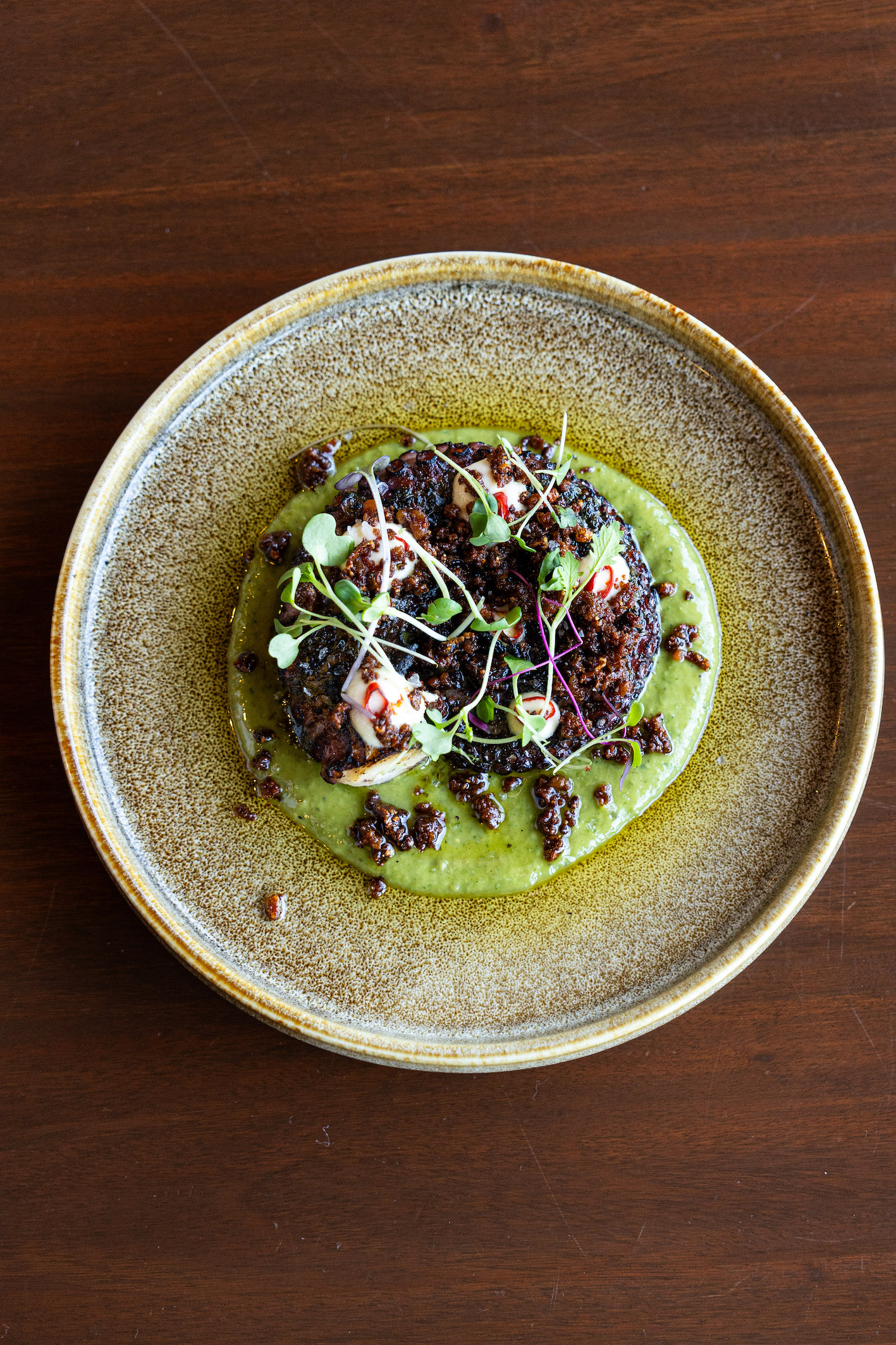
Highlights include the octopus dish with chermoula, gazpacho verde and longganisa. Hao shares how her mother hails from Tuguegarao and brought in longganisa from the province to sprinkle on, pairing the crispy bits with the slight chewiness (but not too chewy) characteristics of the octopus.
There is definitely a sense of umami, a deep sense of savory in their sauces and seasonings. Dy notes the interesting edition of Shao Kao, a Chinese barbecue spice rub that appears in the New York strip. This takes from Dy’s background studying in China and discovering Mainland Chinese food.
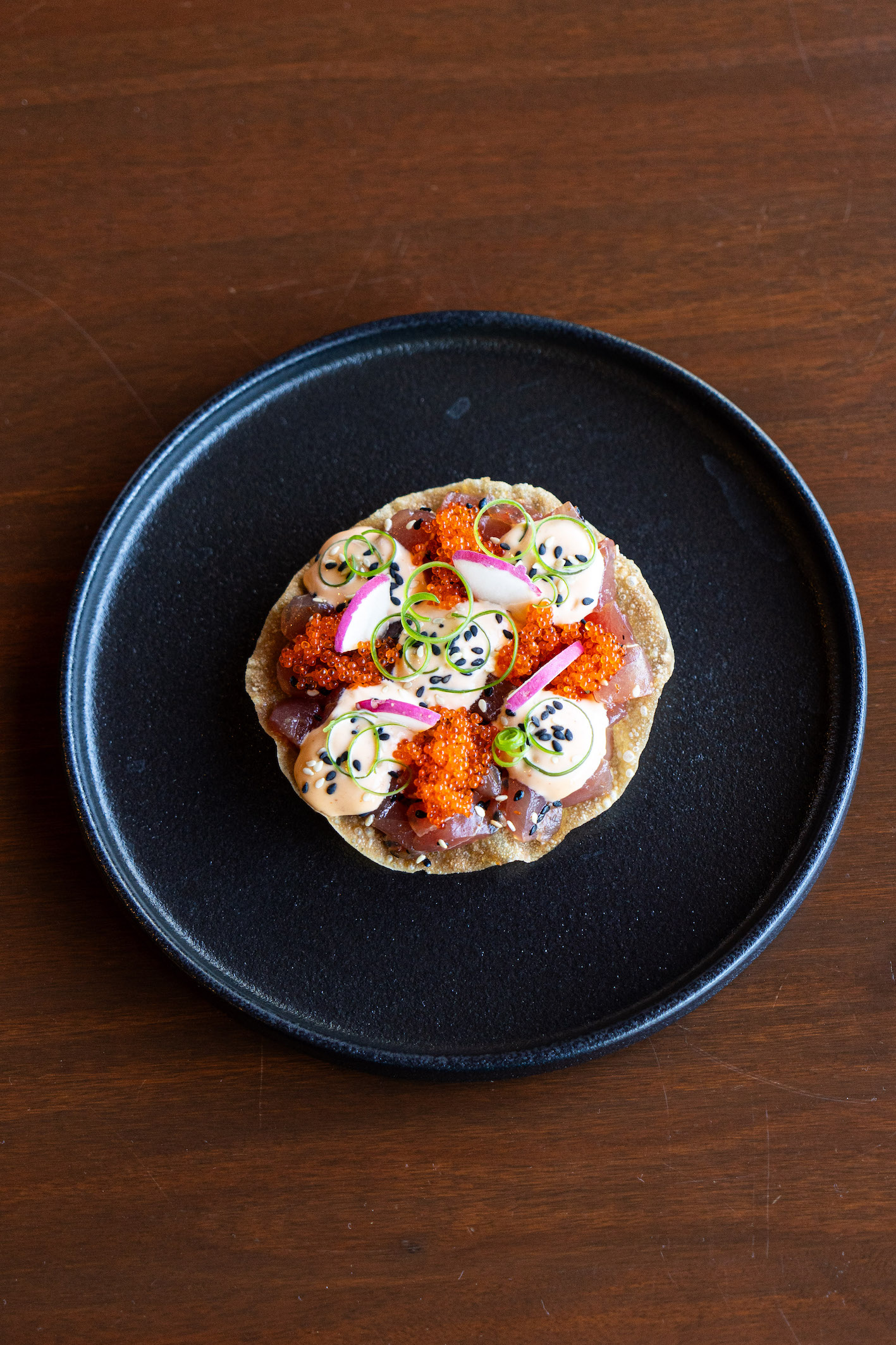
Chantong meanwhile notes his favorite is the ahi tuna tartare, and that he can eat two or three in one go, especially if there are any misfires. The crowd favorite is something like a poke bowl on a cracker, with tuna sashimi cubes, yuzu ponzu, tobiko, and spicy aioli.
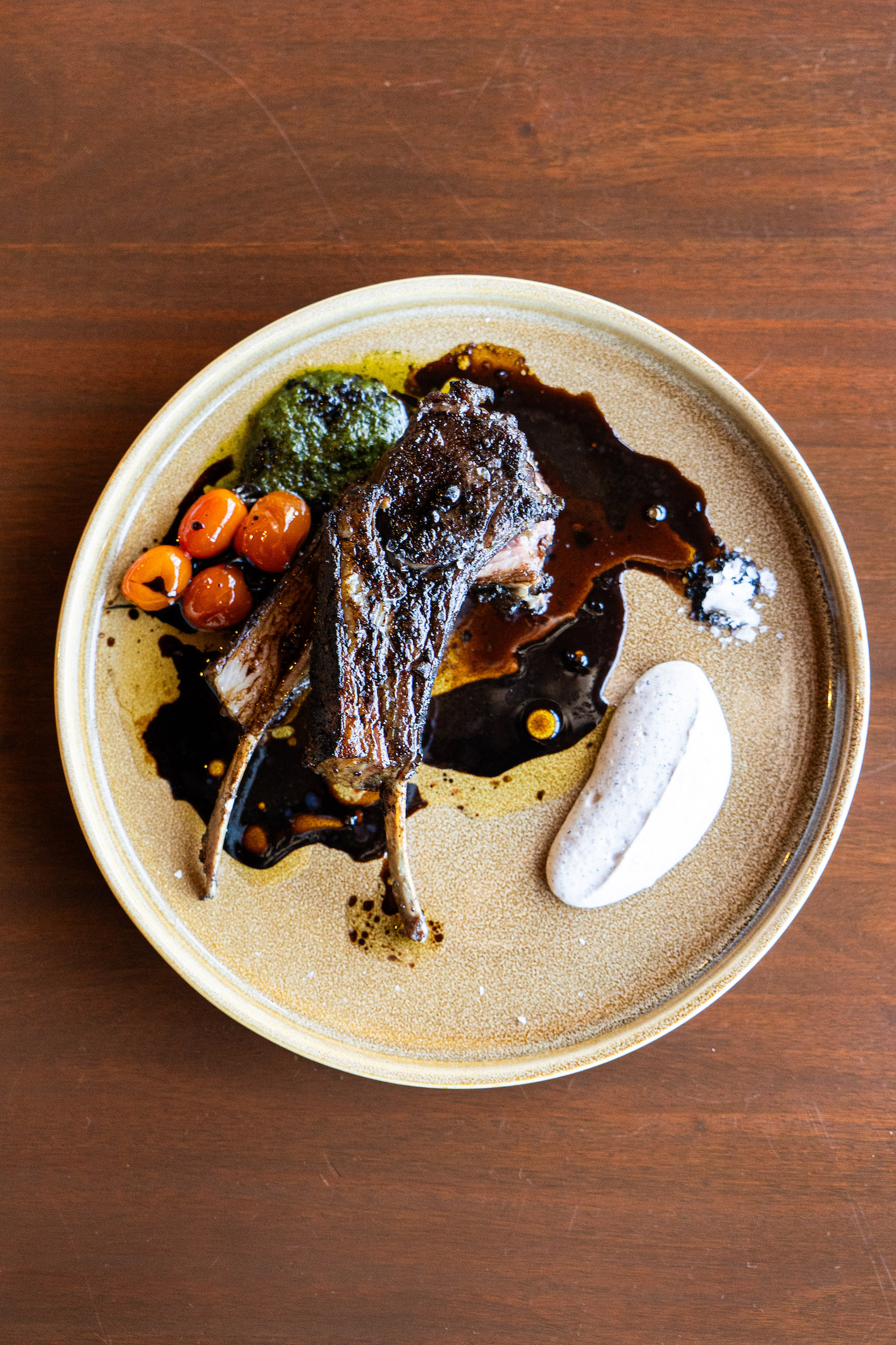
Good lamb is hard to come by in the city, often too gamey or overcooked, but their lamb is grilled just right, complemented by mint, Greek yogurt, and tomato confit. The spicy vodka rigatoni is also a bestseller with its generous glob of burrata. Few can resist the addictive cheesy, rich, and hot crab dip, too.
For those with sweet tooths, the dessert menu features unique experimentations that work with flowers and teas such as the crème brûlée with subtly infused lavender. The Bee’s Knees offer a refreshing end to the meal with elderflower, passionfruit, and burnt honey.

Well-known mixologist Niko Tiutan (batchmates of Dy and Chantong) curated the beverage program, crafting cocktails that complement the food menu and utilizing kitchen supplies to minimize waste in both the bar and the kitchen.
For example, the shishito peppers in the Seva cocktail with Earl Grey, vanilla tincture, and orange flavors, are also used to complement the steak. Another cocktail, the PB&J Amaretto Sour, utilizes blueberry-infused syrup. This leaves a lot of blueberry waste. As a solution, the team dehydrates the blueberries, turns it into a powder, and puts it into the Bee’s Knees dessert.
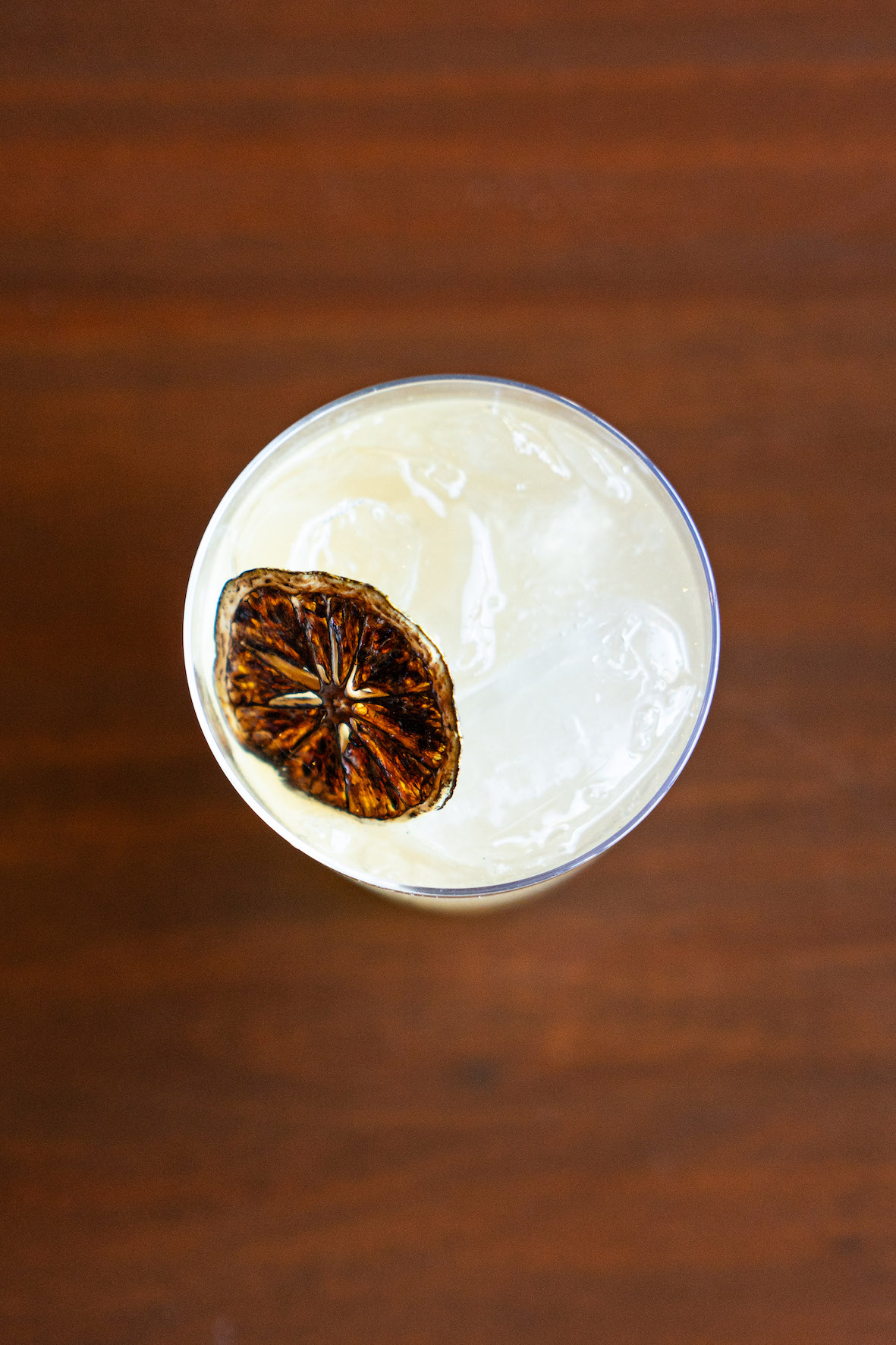
Elevating San Juan
“One thing we notice is that when people enter, they’re like, ‘Wow, this is in San Juan?’ We want to be a staple here,” says Hao.
So far, Seva has had few marketing campaigns. But since opening on Jan. 1 through a New Year’s Eve party, every night has been packed, driven by word-of-mouth recommendations.
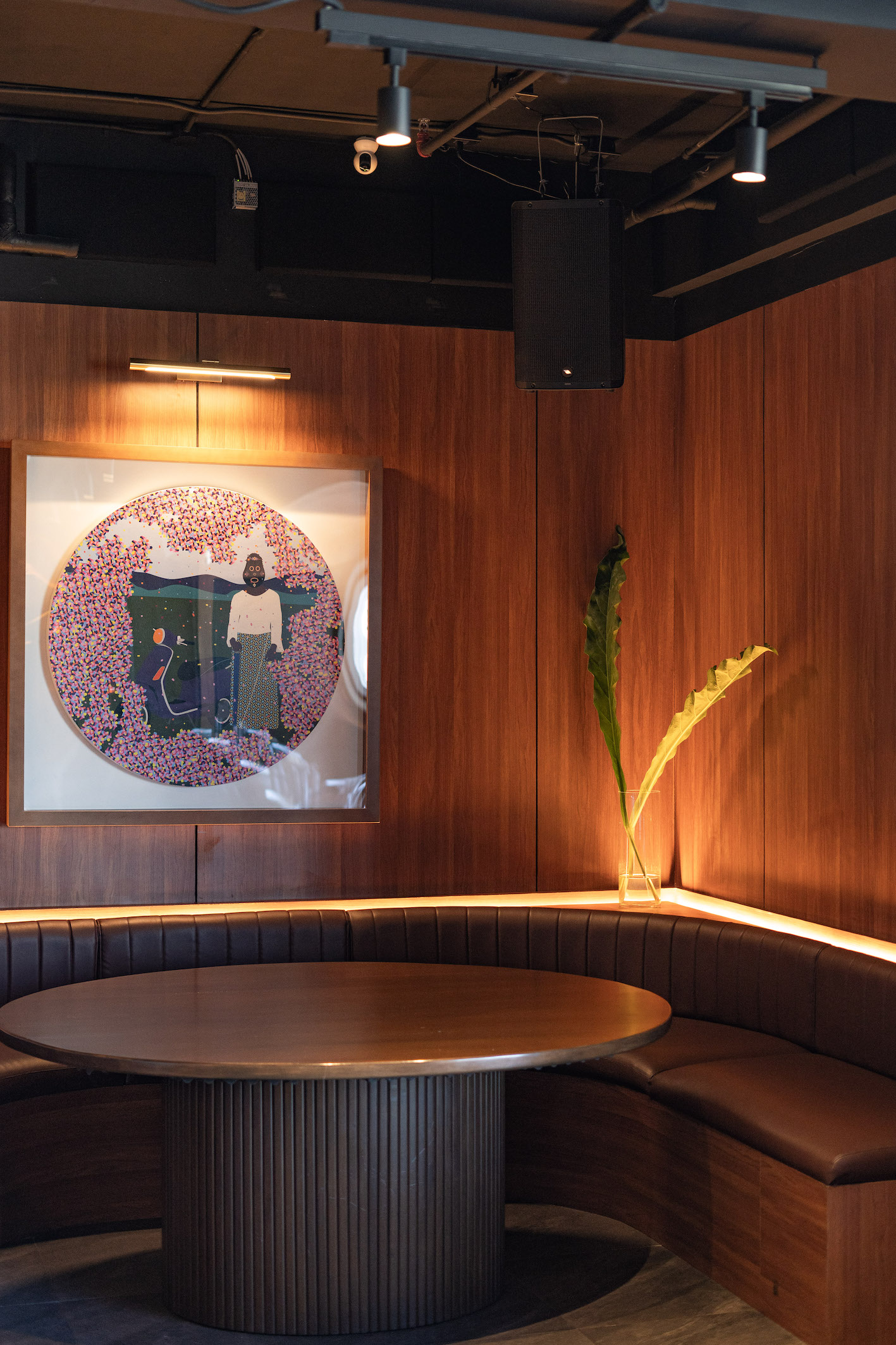
I recall trying to book a reservation on a random Wednesday evening. I took too long to confirm and by 3 p.m., both seatings were full. As somebody born and raised in Greenhills, my first reaction to entering Seva and stepping into such chic ambiance garnered a definite “wow” reaction, followed by a surge of pride for the community.
As Seva continues to grow, the team’s vision remains clear: to offer an exceptional dining experience that is uniquely San Juan. “We want visitors to remember us as something they haven’t experienced before,” says Dy.
“We see it as a community, with everyone helping one another,” Chantong adds. With their innovative approaches and dedication to quality, Seva is undoubtedly stepping up San Juan’s culinary scene.
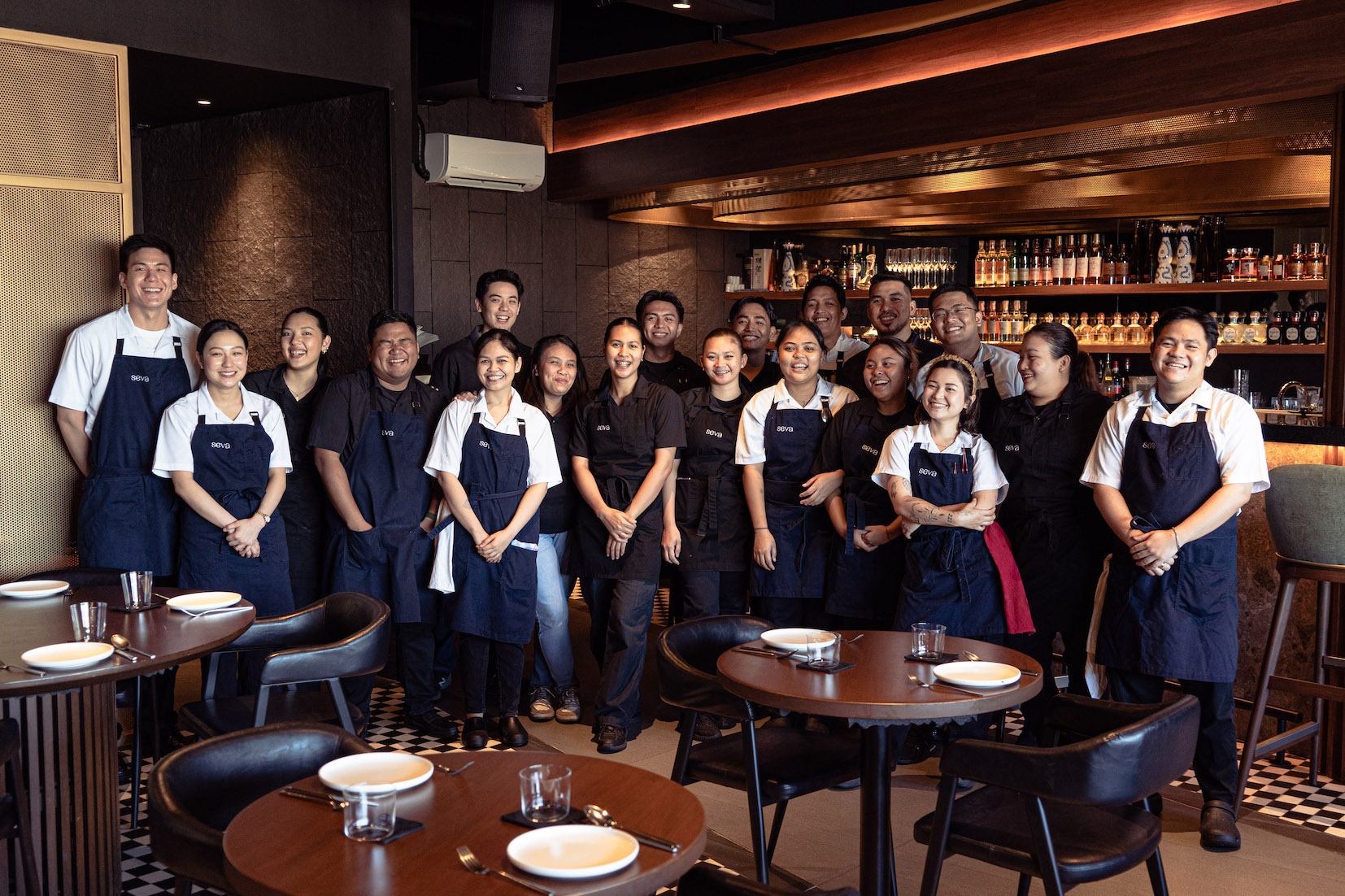
The restaurant is different from culinary experiences in BGC or Makati. The team took a gamble opening in San Juan, but as fellow residents of the city, they know the market and they’re evolving alongside new concepts in the area—from the chic The Corner House to a multi-level parking and even an indoor golf simulator.
I ask the Seva team if San Juan is set to be the new Poblacion. Likely not. But this new restaurant is building an identity all its own.
Seva is located at 2F, LYH Building, 714 Jose Abad Santos, San Juan, 1500 Metro Manila.
